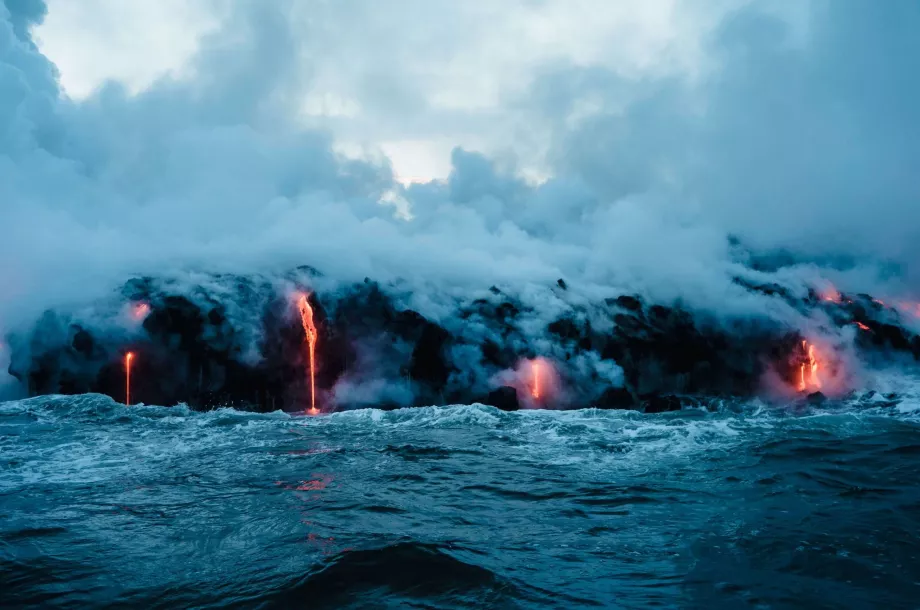Car rental in Big Island

Renting a car is practically the only way to travel around the Big Island. However, driving a car in Hawaii is relaxing, the locals are used to tourists and there is no need to worry about renting a car on the Big Island.
Of the main Hawaiian islands, the Big Island is the most densely populated, so the traffic isn't extreme.
Even on the Big Island, general car rental guidelines apply and if you're new to this segment, check out our article How to Rent a Car Abroad for the First Time.
Where, when and how to book a car on the Big Island
When booking a rental car, the general rule of thumb is that the earlier you book, the cheaper it will be, however, in the Hawaiian Islands, prices don't vary wildly unless you're travelling over Christmas or major US holidays.
To book, we recommend using one of the comparison engines of all car rental companies, which will sort the results according to your chosen criteria:
Compare car rental companies on booking.com
Big Island car rental prices
Renting a car on Big Island is a relatively cheap affair, at least compared to very expensive accommodation and other services. The price depends on the length of the rental (the longer, the cheaper the daily rate) and, of course, the type of car.
- 7-day rental of a smaller car - from 275 usd
- 7-day rental of a jeep or more expensive car - from 350 usd
- Car rental offers at Kona KOA airport
- Hilo ITO airport car rental offers
Always read the rental terms and conditions in detail, especially the insurance, which you can also find on Booking.com. Some rental companies include insurance in the final price, elsewhere you will have to pay extra, between 5 usd and 10 usd per day depending on the type of car and the length of the rental.
One-way rental
Because the Big Island is large enough and the two main airports are at opposite ends of the island, one-way rental is a very popular type of rental. In practice, you pick up your car at one airport and return it at the other.
The vast majority of local car rental companies do not charge any extra for one-way rentals.
International driving licence and other documents
The Hawaiian Islands are part of the USA and you need an international driving licence to drive here, which can only be used in combination with a regular national licence.
In the USA, the Geneva Convention International Driving Permit is valid.
Car rental companies usually require a credit card to rent a car, and will often lend you a debit card, but either on less favorable terms or with a very high deposit often exceeding even 1 500 usd.
Petrol prices and where to park
Gasoline is about a dollar a gallon more expensive in Hawaii than in the continental US.
1 gallon of gasoline costs on average 4 usd on the Big Island, which means that converted to gallons, you will pay about 1,20 usd for 1 gallon of gasoline.
Gas stations on the Big Island are nothing out of the American standard. Usually, "Regular" fuel, i.e. regular unleaded petrol, will be filled up by the attendant, but you have to prepay by card at the terminal at the pump, where you have to enter your postcode, which is linked to your card account, to check.
The card will then be charged for the amount you load. If the terminal won't accept your international card (a common problem), you must first pay for the petrol at the attendant's counter, where you choose the exact amount. If you do not draw it, the excess will not be debited from the card.
There are plenty of petrol stations in the biggest cities, don't rely on them in the countryside.
Parking is easy all over the island. Most parking in the towns or at the beaches is free, and even in the largest town, Hilo, there is not the slightest problem parking.
In fact, there are 2 huge public car parks right on the main street in the centre. The exception is the parking lots at state reserves and national parks, where you have to pay a parking fee, usually at the rate of 5 usd.
Traffic and traffic regulations
The main roads on the Big Island are good quality tarmac and well signposted, nothing to worry about. Be careful of distances. Looking at a map, it's easy to succumb to the impression that everything is a short drive away, but the distance between Kona and Hilo alone is 125 km.
Traffic is very light due to the relatively sparse population. You won't encounter traffic jams even in the towns.
Violations are very controlled and speeding, parking at a no-parking zone or talking on the phone while driving can get very expensive. Check out the basic traffic rules on Maui:
- Drive on the right.
- The speed limit (always posted) is 55 mph / just under 90 km/h on roads outside of town and 25 mph / 40 km/h in built-up areas
- you may turn right on a red light unless the sign specifically states "No turn on reg signal"
- at low-traffic intersections you will see "All-way Stop" signs, i.e. there is a "STOP" sign from all directions. The first person to cross the intersection is the first to arrive. If 2 or more vehicles arrive at the same time, you follow the same rules as at Czech intersections.
- talking on the phone while driving is forbidden
- There are no roundabouts on the Big Island.
Any questions left?
If you have any questions or comments about the article...

